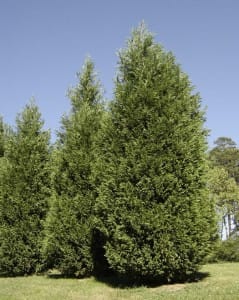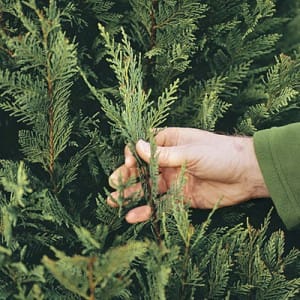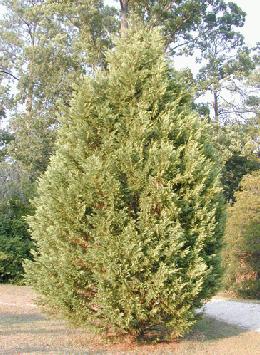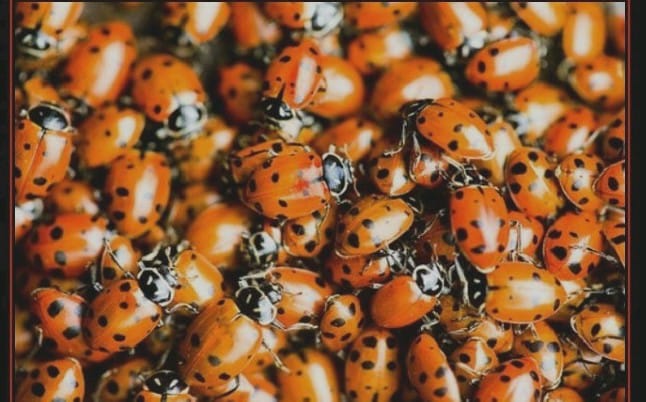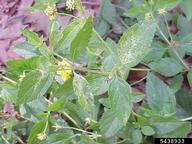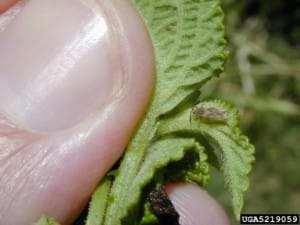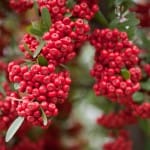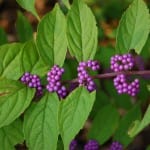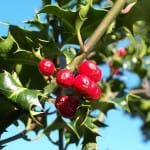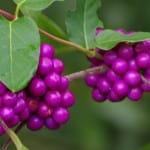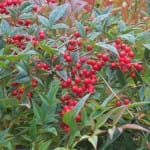Source(s): Randy Drinkard
It’s June and Japanese beetles are appearing on a number of plants. The damage adult beetles do in a short period of time can wreak havoc on flowers, shrubs and vegetables. Feeding on the upper surface of leaves, they eat the tissue between the veins, leaving a skeletonized appearance to the damaged leaves. Japanese beetles love certain plants with crape myrtles and roses being favorites.
As the name implies, Japanese Beetles are not indigenous to North America. They were accidentally imported from Japan and first appeared in New Jersey in 1916. Despite efforts to contain them, they now infect about half the contiguous 48 states and continue to spread south and west at a rate of 5-10 miles per year. Unfortunately, they will probably be with us for the long haul. The good news is that they can be effectively managed with minimal damage to your landscape.
The adult beetles are generally less that one half inch long. They are metallic green with copper-brown wing covers. Beetles emerge from the ground in early June and feed on more than 300 different plants including herbaceous ornamentals, shrubs, vines, trees, small fruits, fruit trees, row crops, and even poison ivy. They generally live 30-45 days. During that time, females lay 40-60 eggs in the soil. The grubs hatch after 8-14 days and spend 10 months underground, feeding on plant roots and organic matter. Their one-year life cycle comes full circle as the adults emerge the next June.
The most effective means of control is to treat both adult and larval forms. Because the adults are capable of flying in from other areas, controlling one form does not necessarily control the other. Any control measures will be much more effective if all your neighbors control their populations as well.
Adult beetles usually feed in masses and tend to prefer plants in direct sun. Their presence attracts more beetles as they emit pheromones(odors) that attract other beetles to feed and mate. If you catch them early and don’t have too many, hand picking is an effective control. Simply pick or shake off the beetles and drop them in a bucket of soapy water. This is easiest to do in the early morning when the beetles are less active. For larger infestations, spray with Sevin(carbaryl). Be sure to read and follow all label directions. During heavy activity, you will need to spray every 3-7 days. Because Sevin is deadly to bees, try to spray when bees are less active, generally during the hottest part of the day from noon to around 5 pm. When using Sevin on vegetables for insect control, there is a wait period of 3-5 days before crops are safe to harvest and eat. Pheromone traps are not recommended for use in the landscape. They do trap beetles, but in doing so they usually attract many more beetles to your yard and garden than would ordinarily be there.
While we easily see the adult beetles and the damage they do, the larval form can cause extensive damage as well. Larvae are white grubs that are C-shaped when disturbed. White grubs feed primarily on roots of turf grasses but they also attack roots of ornamental trees and shrubs. Heavy infestations can destroy large areas of turf to the extent that the grass can be rolled up like a carpet. You can dig a sample(3 inches deep) to determine their presence. Control measures are warranted if you have more than 10 grubs per square foot of turf area. The most effective time to control grubs is during the late spring(May) or late summer(August) when they are close to the surface of the ground. Applying trichlorfon, imidacloprid(Bayer Advanced) or halofenozide(Grub-B-Gon) to the soil in areas where grubs are active will control them in that specific area.
For organic control, treat the lawn or ground with Bacillus popillae or Milky Spore. Milky spore is the common name for the spores of Bacillus popillae. Bacillus popillae is actually a bacteria that infects Japanese beetle larvae living in the soil and kills them before they develop into adult beetles. Spores build up in the soil over 2-4 years as grubs ingest them and die. Japidemic and Doom are milky spore products.
There are cultural practices that can lower the number of beetles in your landscape. While Japanese Beetles feed on many species of plants, they definitely prefer particular ones. Some that are particularly susceptible to damage include roses, grapes, sassafras, Japanese maple, plum, apple, cherry, peach, crabapple, crape myrtle, rose of sharon, birch, black walnut, willow, asparagus, and virginia creeper. Other plants are very resistant to beetles. To minimize damage in your yard, consider planting a variety of plants that are not attractive to the pests. These include magnolia, redbud, dogwood, red maple, holly, boxwood, hemlock, yew, juniper, spruce, pine, forsythia, clematis, hydrangea, and sweetgum. Remove diseased and damaged fruit from trees and the ground because the odor of this fruit will attract beetles that will then feed on ground fruit and surrounding plants.
Resource(s): Insect Pests of Ornamental Plants
Center Publication Number: 202
